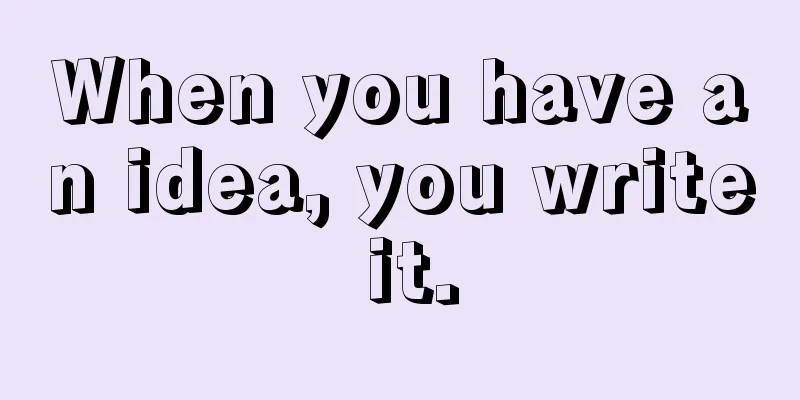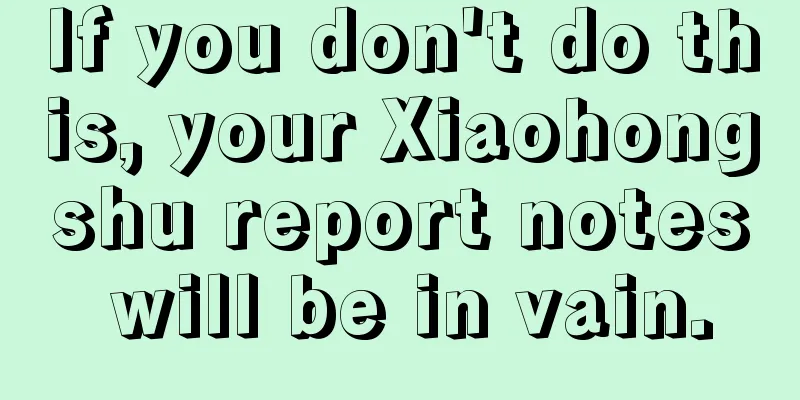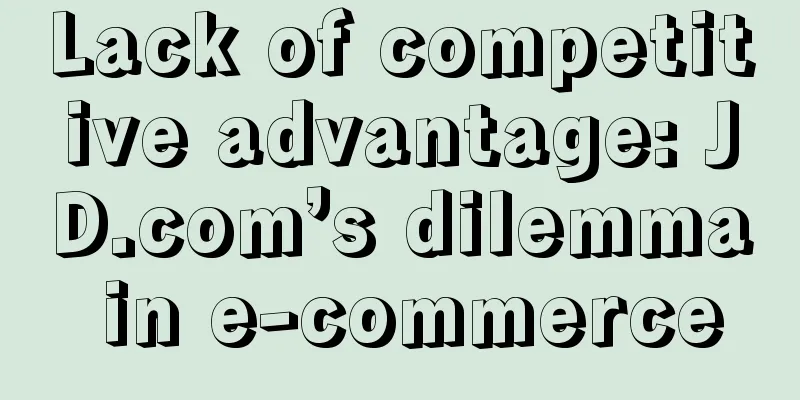When you have an idea, you write it.

Sometimes, I get some complaints: Many self-media authors and editors told me that the process of communicating with industry experts, extracting key ideas, and turning them into articles is very challenging. Such efforts can often only produce a few works within a week. What is even more confusing is that despite great efforts, the work rarely achieves the expected results, and sometimes is even criticized by superiors. For such a small amount of work and such a long time spent on it, it is still not as good as GPT. Faced with this dilemma, my boss thought I was inefficient, and I felt exhausted and exhausted. Every time I faced a manuscript, it was like standing in front of an insurmountable mountain. I wanted to improve efficiency, but I was afraid that the quality would decline. What should I do? Is there a way? You betcha, there really is. Over the years, I have been practicing four points to maintain a high frequency and quality of writing, and they have become part of my life. 1. Write when you have an ideaHaving an idea is a colloquial expression that usually means that an idea, plan or thought suddenly comes to mind. It can be used to describe a new creative idea, a part of a solution, or even a new understanding of something. for example: A few days ago, I had been wanting to write an article about short video insights, but I couldn’t find the direction. As a result, I accidentally heard two strangers next to me in a coffee shop talking about the operation of short videos, the high cost and low efficiency. I immediately opened the flash recording app on my phone and wrote down the idea. Not only did I preserve the inspiration of the moment, it also provided me with a new perspective and direction of thinking. People's initial views on many issues are usually fragmentary, emotional, and unclear in details; therefore, recording the process at any time is actually an opportunity for deep reflection and sorting out. However, I often see people writing down their ideas in a chronological order. What kind? Today, the new iPhone is released. After reading the comments from netizens, I found that the shell is the same as last year, with no innovation. I don't think it's worth buying. The company will organize a team-building activity in a few days, and it's not bad to use the old phone to take pictures. By the way, I'm very busy this week, and I don't even want to go to my friend's wedding next month. Although this kind of content covers certain thoughts and events, it lacks a clear theme and central idea, which will give you a sense of aimless recording. When you store it in your mobile phone and organize it again, it is easy to feel overwhelmed and difficult to classify. Obviously, there are some basic elements to recording ideas, and I follow two of them: First, you should not only provide evidence for your point of view, but also list evidence that may refute your point of view. When many people make arguments, they tend to only focus on supporting evidence and ignore evidence that may refute it, which can lead to self-confirmation bias. It’s easier to be fair and think calmly when we make an effort to see things from other perspectives. Second, try to quantify all the evidence. Only when the evidence is quantified can we clearly compare their importance and distinguish between the primary and secondary contradictions. Practice has taught me that the whole process of collecting information and recording ideas, paying attention to details and thinking deeply, will sublimate a problem. To explain it in detail, let’s take the example of the short video: The two strangers mentioned that short videos are costly and inefficient. I would think about their background, from an operational perspective, or do they represent the views of a certain type of MCN company, or are they the platform? Operators are more concerned about content production costs and promotion effects; MCN companies are more concerned about the quality, quantity, and return on cooperation of creators. Platforms pay more attention to overall user activity and advertising benefits. Each perspective presents specific arguments, and understanding these backgrounds and positions often makes your thinking more comprehensive and in-depth. Remember, don’t write too long about your ideas; brevity and clarity are key. Long essays are not suitable for moments of inspiration, and you may not have that much time. Every time I record, I tend to focus on a few core perspectives and express them in simple language, so that when I review them next time, I can quickly grasp the key points and improve them. This is how all my marketing insights and psychology content come from. Another important aspect of writing down ideas is that you should not only write but also ask questions. The Chinese way of thinking is good at answering "what" right away; this is different from the foreign way of thinking, where they like to use the Golden Circle Rule (why-how-what). Simply put, turn some ideas into questions and answers (QA). For example, the idea I just saved in my note taking software is roughly like "Why are short videos expensive and inefficient?" The corresponding answers below are all supporting evidence. This method has its advantages. When you turn on your computer and want to create a short video, you will find that you have already recorded many questions and answers. This not only makes the integrated content more perspective, but also makes the logic more rigorous, and ensures smooth and natural creation. If you stick to it for a long time, your daily thinking mode will also be more organized and rigorous. Obviously, the first step of creation is very simple. When you have an idea, you write it, turn the idea into a question, and learn to answer it. So, do you need to set goals in the early stage of creation? Of course. 2. What does it mean to set goals?That is, how many ideas do you need to dig out every day to complete today's tasks. In the past, I would also set unrealistic goals. After repeated attempts, I found that people have many flashes of ideas, but there are only 6 to 8 of them that I can really pick out and support clearly. This does not include the thoughts that others have contributed to me when I met them. If all are added together, the number would be even greater. There are four benefits to setting goals: being aware of the problems that the brain ruminates on daily, exercising your thinking methods, practicing deliberately to improve your writing skills, and mastering habits and a sense of rhythm. When you know how many ideas you need to complete every day, your brain will automatically start looking for and digging out new content, which will not only improve your creative efficiency but also maintain the quality of "each idea". The short-step principle is the main principle used by American psychologist Skinner in writing programmed teaching materials. He is accustomed to breaking down goals into many "small steps" with logical exercises. Then, the final goal can be achieved through a series of "small steps", which can not only control the process but also provide timely feedback. When you open the note-taking software to check, you will also know what is written well and what needs to be improved. In addition, during the goal-setting process, I have a habit called rigid redemption. What does it mean? This is a concept in the financial industry. After a trust product expires, investors' principal and earnings must be distributed. In plain words, it is a mandatory self-commitment, "leaving no way out for yourself." Life is already tiring every day, why do we have to do this? I have told you a story: When cartoonist Hirohiko Araki designed the plot of "JoJo's Bizarre Adventure", he often drew the protagonist in desperate situations. The interesting thing is that when he drew it himself, he didn't know how to rescue the protagonist. Because of this, the story twists are always unexpected and shocking. In fact, only when you really push yourself to a certain extent can you know how much potential you have. When this financial concept is applied to creative goals, it actually means telling yourself that no matter what happens, you must complete today's task without any excuses or shirking. It may be a bit extreme at first, but after I actually put it into practice and persisted for half a month, I found that rigid commitment can really help me form a firm habit, which not only improves efficiency but also improves self-discipline. By the way, it may not be suitable for everyone. However, I think it is worth learning for everyone. After all, writing a complete and well-documented idea is not as difficult as writing a book, and there is no resistance. Therefore, my second principle is to set goals and deliver rigidly. 3. Don’t write just for the sake of writingIf you just pick a topic to complete your daily goals, without doing in-depth research or personal experience, the thoughts you write down are not considered thoughts, but just a piecemeal collection of fragmented content. Yesterday, I read an article titled "How to quickly understand an industry" and thought I could get some practical advice from it. But when I turned to the end, I found that the article only listed theoretical models and analytical tools. What is Porter's Five Forces, industrial chain distribution, industry map, SWOT analysis, demand analysis, supply analysis … They all sound very impressive, do you think they are useful? They all have their own unique value. But the problem is that few people can really use them skillfully. Why? Because in actual work, company industry analysis is the result of teamwork and cannot be completed by only one person. Moreover, the actual business scenarios are far more complicated than these theoretical models. Therefore, in the AI era, not only business insight analysts, but also some people in B2B companies who operate content for customer acquisition, will completely lose their value if they simply pile up content. All mental workers must find their own uniqueness. The word "search" may not be accurate enough. We are more like cultivating and shaping a true self and even content products through ideas. This is the sum of time, experience, and management, rather than simple processing. What should I do if I really have no inspiration? I will do two things: First, find commonalities Commonality lies in the same or similar attributes between different problems and ideas. Some seemingly unrelated points, when connected together, happen to form a new thinking framework. A few days ago, I sorted out some thoughts about teamwork and temporarily saved them in a note-taking software. Recently, when I used the "Daily Review" function of the note-taking software, I inadvertently thought of a football scene in a movie I watched recently. At first glance, ball games and daily work environments seem to have nothing in common. But when you think about it, they both focus on teamwork, strategy, and effective communication. So I quickly wrote down this association, integrating the actual example of the ball game with the concept of teamwork. This is the commonality, thinking about everything you learn from the outside world and how to integrate it with existing ideas. Sometimes, changing your perspective can lead to different experiences. Second, ask a question Who to ask, how to ask, and what to ask? These are the three little principles I follow before asking. A few days ago, when I was writing an article about "brand public relations", I was thinking about why a sentence from the top influencer could cause such a big public opinion. After all, it was just a small matter. So, I asked people who had purchased products in the live broadcast room, people who had not purchased products, and people who do marketing in the circle. As a result, the three types of people gave me three different opinions. People who shopped in the live broadcast room said, "I usually don't pay much attention to the price. I didn't notice that it was expensive. My first impression was that it was a good deal. Because the product itself was priced high, I was not sensitive to it." People who haven't bought it say that 79 yuan is a bit expensive. I usually buy eyebrow pencils for only 15-20 yuan, so the price difference is too big. The analysis by people in the industry surprised me. One KOL said that the vested interests in the ecological chain would definitely take advantage of small slips of the tongue to create public opinion topics, magnify small things and influence public opinion. The biggest inspiration I got from this exploration is that for any blogger or even brand, when it reaches a certain stage, it is easier to attack than to defend. As a creator, if you cannot reveal the truth behind, you can at least provide a more objective and comprehensive perspective. It is not difficult to see that asking a question is very attractive. It not only brings answers, but also expands your thinking and allows you to see more possibilities. However, if you ask for more details, I usually ask for opinions and experiences. What is opinion? As the name suggests, it means how you look at it and what angle you give. What is experience? You need to provide how to do it and what are the steps. In this way, you will know what the facts are. Everyone has a unique way of thinking and basis for judgment based on their own experience and background. The advantage of this strategy is that it can obtain diverse and comprehensive perspectives. When you gather multiple viewpoints and bring them together into one theme, you can better grasp the overall picture and depth of an event. So, this is my third principle. Don’t write just for the sake of writing. Center on a certain idea, change your perspective to find commonalities, and ask questions. So, what is the fourth principle? 4. Find your own styleA few days ago, a reader told me that he structurally disassembled what I wrote and filled in his own thoughts based on the framework; he also disassembled Liu Run's writing and Fan Deng's book review methods, etc. After hearing this, I felt mixed emotions. I used to imitate a lot, but later stopped because such content lacked real "soul". In the field of content creation, many people choose to learn and improve through imitation. What is their imitation goal? Many people will study the structure of high-traffic articles or observe the expression methods of top KOLs. After absorbing this structure and style and injecting my own views, I can indeed complete an article. I am actually open to this. Why? In my opinion, the key to imitative learning is copying. However, this copying is not about copying the appearance and structure; its fundamental purpose is to bring oneself into the relevant scene, so that the body and brain can slowly enter a corresponding state. When you enter a state and use that sense of rhythm, you can start to transform from copying to producing your own things. The principle I follow is to choose a target to imitate, rather than imitating everyone. A person can do well by imitating one thing, but trying to imitate many things will distract his attention and the effect will often be greatly reduced. Socrates said in The Republic: It is impossible for a person to devote himself to something valuable and at the same time be proficient in imitating many things. In other words, human concentration and energy are limited. Although two things may seem closely related, such as tragedy and comedy, it is not easy to reach the peak of both. Therefore, we should choose more wisely what to imitate and learn from, to ensure that our efforts can get the greatest return. This is also where I have a different view on imitation. So, how do you find your own style? There is no quick way to find your own creative style. Although you can learn some experience from others, in the end you still have to explore, feel, experience and think on your own. After all, everyone is unique, so you don’t need to rush to find your own style. If you write more, you will naturally feel it. Many people would say, why not just create your own works from the beginning instead of imitating others? There is a saying: If you can’t see it, you can’t think of it, and naturally you can’t do it. Obviously, imitation and pure plagiarism are two different things. Imitation is a learning process, to find the feel, to find the automated thinking that allows you to type in front of the computer, and to form muscle memory. Copying means repeating other people's frameworks. Even if you have your own content, it only stays on the surface and you have not yet deeply understood why others do that. When you truly understand and master certain knowledge or skills, you no longer need to imitate, you can innovate and go your own way. Therefore, the fourth principle I adhere to is: focus on one imitation target, study it in depth and fully understand it, and then start to shape your own unique style. It is not recommended to browse around and imitate everywhere, because this will make you lose your direction and affect your understanding and establishment of your own style. You need depth, not breadth. Well, when you have an idea, you write, set goals, and deliver rigidly. When you encounter a creative bottleneck, explore deeply, ask questions, and find commonalities. These points are shared with you; excellent creators cannot do without fireworks, and the same is true for business. Keep taking action and record your thoughts during action. V. ConclusionTreat writing as life. Only thoughts that have been tested by practice and action are more real and convincing; such content can not only touch people's hearts, but also easily become your influential works in the future. Author: Wang Zhiyuan WeChat public account: Wang Zhiyuan |
<<: What kind of PR response do users need?
>>: How to quickly understand an industry?
Recommend
Xiaohongshu high-quality delivery notes production standards
This article mainly introduces how to formulate hi...
Big models have big price cuts! Byte, Alibaba, Baidu and Tencent take the lead in opening the book!
In the past week, major model manufacturers have a...
How to cancel the pre-sale system?
During this year's 618 shopping festival, all ...
Interpretation of several important updates of Xiaohongshu in recent days
This article provides an in-depth interpretation o...
Brand portfolio strategy: How do companies plan and implement multiple brands?
To develop, enterprises often need to launch multi...
What is the appropriate gross profit margin for Amazon? What is the profit margin of the product?
When you open a store on Amazon, you must learn to...
What is a scenario? Define the "field" power of the product!
In business and product design, the word "sce...
Self-assessment of corporate customer acquisition capabilities: What level is your company at?
In this article, the author shares several typical...
How does eBay distribute products accurately? What is the method?
As the eBay platform continues to grow, more and m...
When is Amazon's store anniversary? What are the activities for Amazon's store anniversary?
Consumers who are used to shopping on Amazon know ...
New tea drinks are collectively "lighter", and we see the formula for future milk tea hits
As consumer demands change, competition in the new...
Can't spend money on Xiaohongshu? There are too few bloggers in the category to cooperate with? How to solve these two problems!
Can't spend money on Xiaohongshu? There are to...
The golden age of high-end brands has arrived
In the current situation of consumption downgrade,...
How is the linio platform? How to do linio well?
The North American e-commerce market is relatively...
Stress relief and squeezing are very popular, and the emotional value business is becoming popular
"Squeeze toys" are currently very popula...









